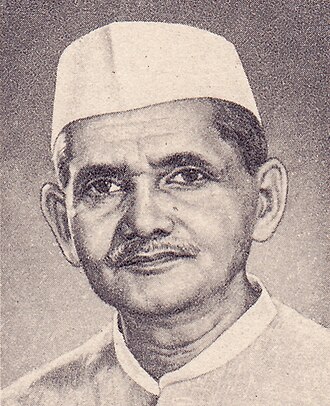Personal Information
- Date of Birth: 02-Oct-1904
- Place of Birth: Mughalsarai, Uttar Pradesh
- Date of Death: 11-Jan-1966
- Nationality: Indian
- Occupation: Freedom Fighter
Summary
Biography
Lal Bahadur Shastri was the second Prime Minister of India, acclaimed for his honesty, simplicity, and leadership during the 1965 Indo-Pak war. He is remembered for his slogan "Jai Jawan, Jai Kisan," emphasizing the importance of both soldiers and farmers for India's progress.
Early Life and Education
Lal Bahadur Shastri was born on October 2, 1904, in Mughalsarai, Uttar Pradesh, to Sharad Prasad Srivastava and Ramdulari Devi. His father died when Shastri was just one year old, leaving the family in difficult financial circumstances. Despite hardship, Shastri walked several miles barefoot to attend school, inspired early on by Mahatma Gandhi's ideals of truth and non-violence. He later earned a first-class degree in philosophy and ethics from Kashi Vidyapeeth, which bestowed on him the title “Shastri,” meaning “scholar”.
Freedom Struggle
Shastri joined the Indian freedom movement at sixteen, participating actively in the non-cooperation movement and other campaigns led by Mahatma Gandhi. He became a life member of the Servants of the People Society, founded by Lala Lajpat Rai, working for the welfare of Harijans (Dalits) and rising to the position of president of the society. Throughout the struggle for independence, he spent around nine years in British prisons for his activities.
Political Career After Independence
After 1947, Shastri quickly rose through the ranks of the Indian National Congress:
- Parliamentary Secretary in Uttar Pradesh
- Minister of Police and Transport, introducing progressive reforms like appointing India's first female conductors and using water jets instead of lathis to disperse crowds.
- Successfully controlled communal riots during the partition, and managed refugee resettlement.
- He held several important union ministries, including Railways, Transport, Commerce and Industry, and Home Affairs. His gesture of resigning as Railway Minister after a train accident demonstrated his integrity and accountability.
Tenure as Prime Minister
Lal Bahadur Shastri became Prime Minister in 1964, succeeding Jawaharlal Nehru. During his short tenure:
- He promoted the White Revolution to increase milk production, supporting Amul and establishing the National Dairy Development Board.
- He spearheaded the Green Revolution, which boosted food grain production in northern Indian states.
- Shastri led India during the Indo-Pakistani War of 1965, where his call—“Jai Jawan, Jai Kisan”—rallied the nation.
- The Tashkent Declaration, signed to formally end hostilities, was followed by his sudden death on January 11, 1966, under circumstances that led to much speculation.
Legacy and Honors
- Shastri was posthumously awarded the Bharat Ratna in 1966, recognizing his dedication and service to India.
- His ideals of simplicity, integrity, and dedication remain an inspiration for generations, and his birthday on October 2nd is celebrated nationwide alongside Mahatma Gandhi’s.
Many institutions, roads, and awards in India honour his contribution to the nation.
Personal Life
Personal Life: He married Lalita Shastri and had six children. His personal life also reflected his values—modesty, hard work, and honesty in all interactions.
Spouse: Lalita Shastri
